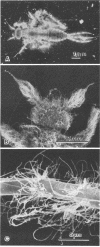Abstract
Larvae of the mayfly (Drunella grandis [Eaton]) from Diamond Fork Creek, Utah, were covered with a heavy growth of the sulfide-oxidizing bacterium Thiothrix. The bacterium did not seem to harm the mayfly, but the Thiothrix trichomes were parasitized by three morphologically distinct bacteria, two of which were cytoplasmic and one of which was probably periplasmic. At least two of the parasites destroyed the cytoplasmic contents of the Thiothrix sp., thus killing the host cell. Attempts to obtain the parasites in pure culture were unsuccessful.
Full text
PDF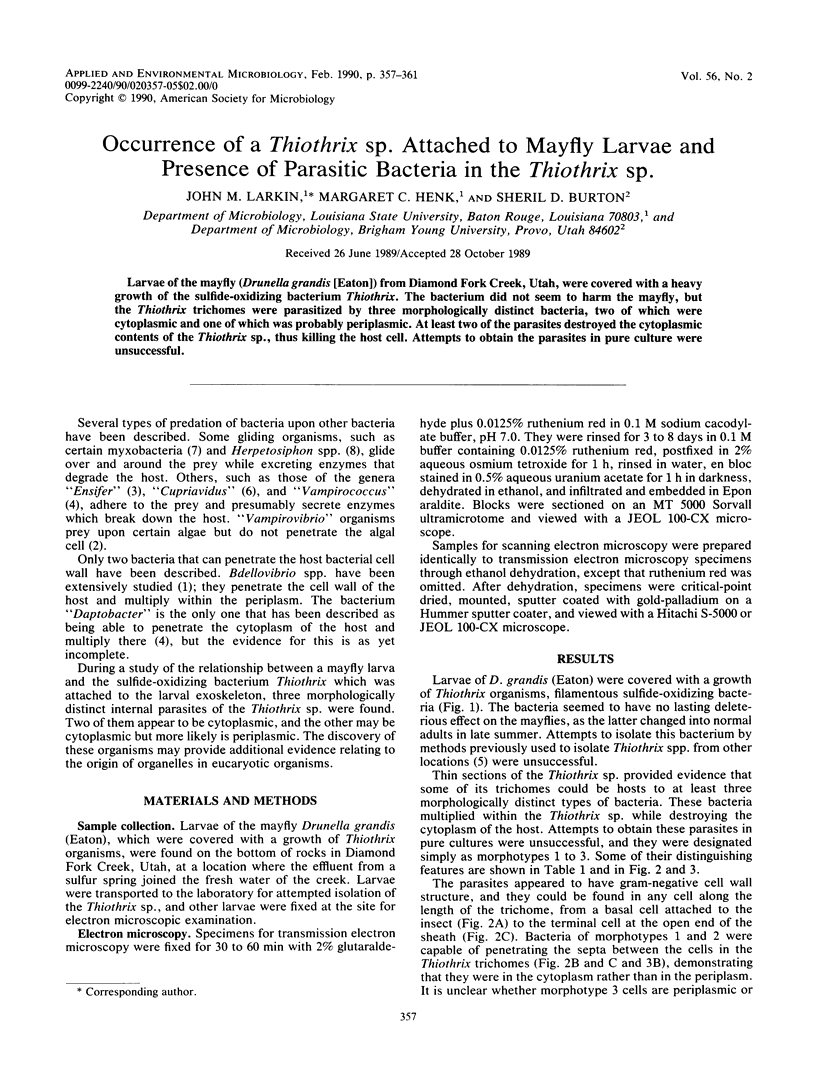
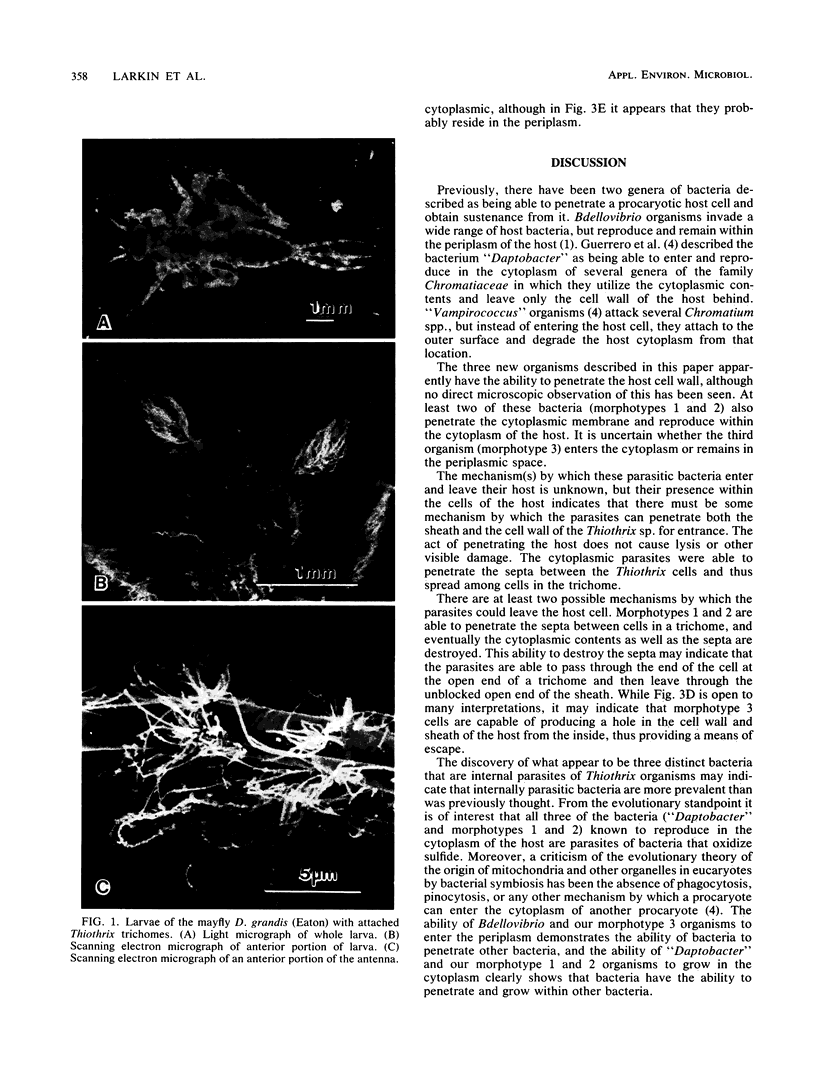
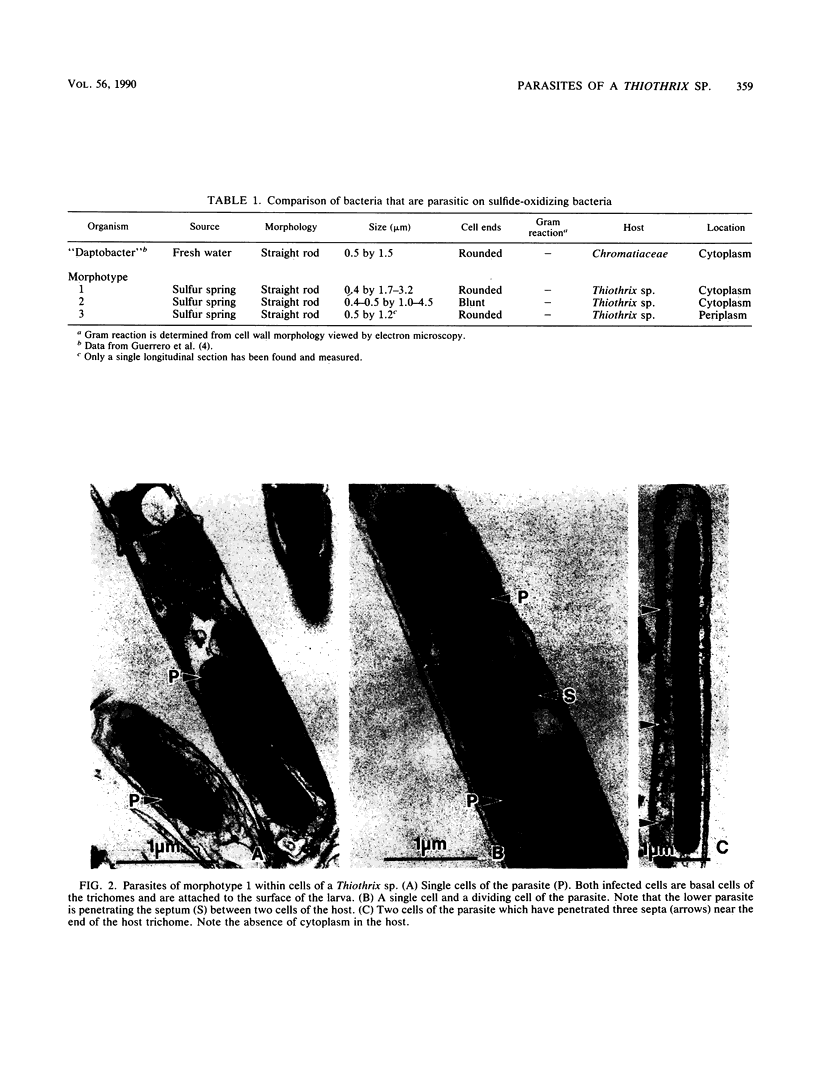
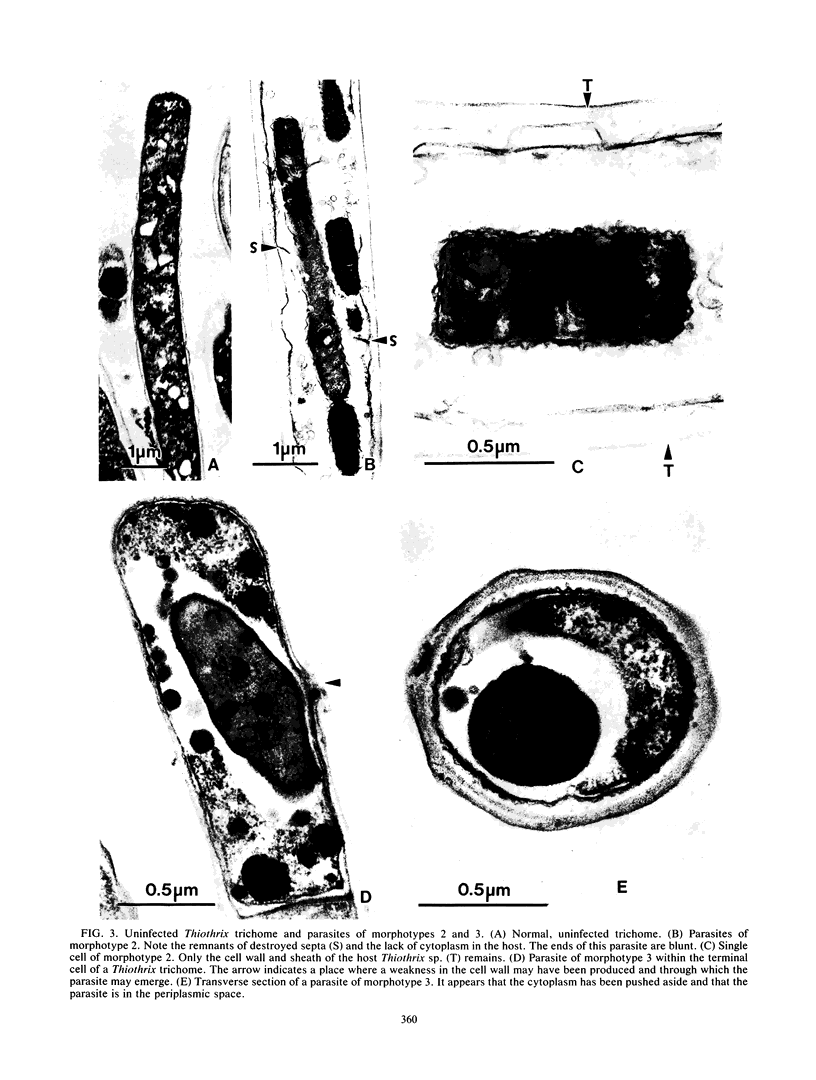
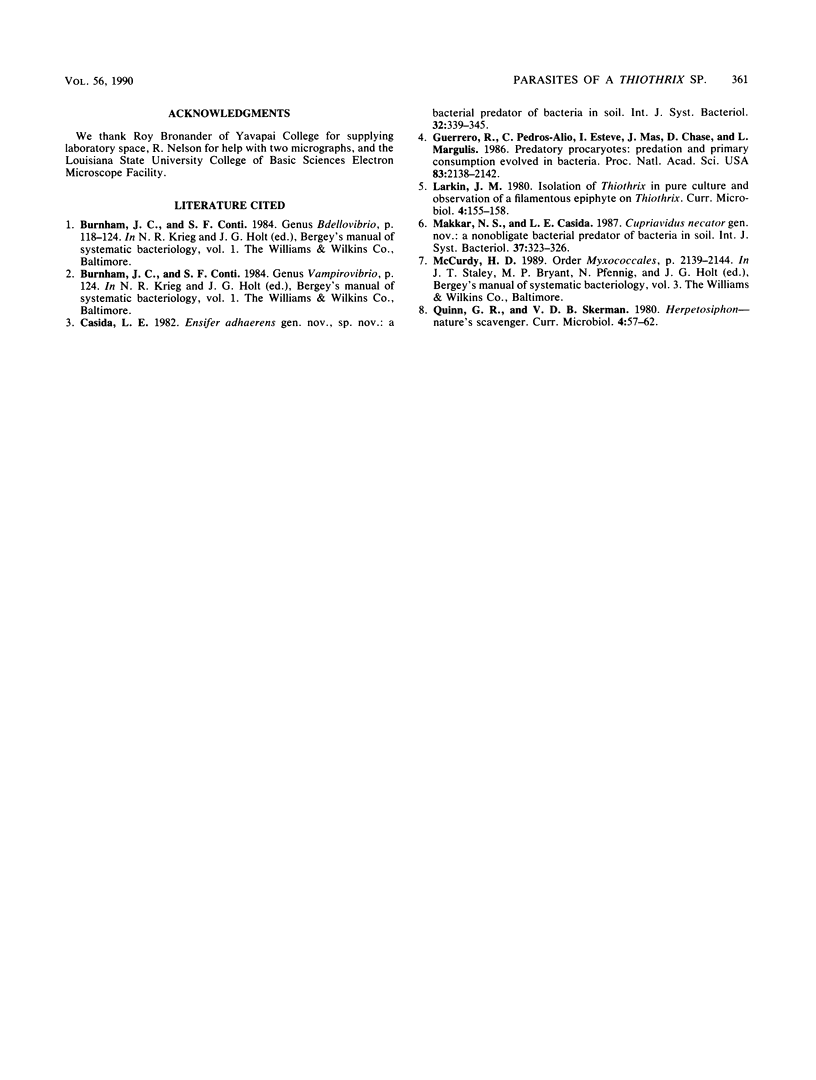
Images in this article
Selected References
These references are in PubMed. This may not be the complete list of references from this article.
- Guerrero R., Pedros-Alio C., Esteve I., Mas J., Chase D., Margulis L. Predatory prokaryotes: predation and primary consumption evolved in bacteria. Proc Natl Acad Sci U S A. 1986 Apr;83(7):2138–2142. doi: 10.1073/pnas.83.7.2138. [DOI] [PMC free article] [PubMed] [Google Scholar]



